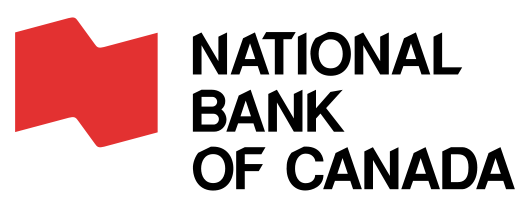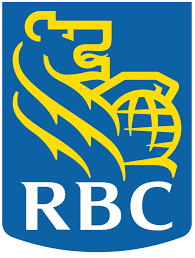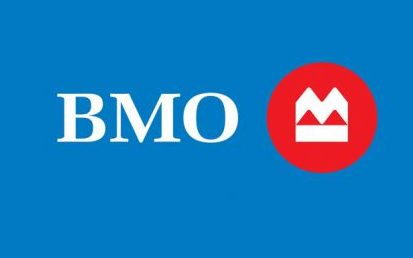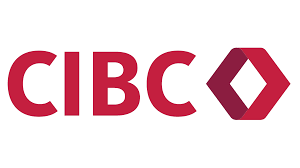Looking to invest in Canadian bank stocks? For a large portion of Canadian investors, banks are an excellent addition to their portfolio.
As a Canadian investor, your risk tolerance may fall on a spectrum – from safe, conservative options to daredevil investments. Canadian bank stocks fall nearer to the safe end, and this safety is just one of the reasons to consider Canadian bank stocks. The other reasons are:
- Generous and financially sustainable dividend payouts.
- All of the big six Canadian bank stocks are dividend aristocrats.
- Decent long-term growth potential, though it varies from one bank stock to another.
We will go over our top picks of the best Canadian bank stocks below.
Current State of Canadian Banking
A small number of Canadian banks dominate the entire banking industry, with the largest six banks in Canada serving 90% of the market.
Canada’s banks are solid, well-capitalized businesses, making them an excellent choice as an investment within most portfolios.
The big six banks in Canada include:
- Royal Bank of Canada (RBC)
- Bank of Montreal (BMO)
- Canadian Imperial Bank of Commerce (CIBC)
- Bank of Nova Scotia (Scotiabank)
- Toronto-Dominion Bank (TD)
- National Bank of Canada
Keep in mind that the National Bank of Canada is much smaller than the other five banks across virtually all metrics.
Pros and Cons of Canadian Bank Stocks
The stocks of the major Canadian banks tend to be highly correlated to one another. The pros and cons of investing in one Canadian bank stock will likely apply to the others on the list as well.
- Accessing a high and stable dividend yield
- Adding relatively defensive, blue-chip companies to your portfolio
- Investing in large and essential companies of the Canadian ecosystem
- Likely having the backing of the Canadian government in the event of bankruptcy
- Canadian banks are known for stability, as demonstrated during the 2008 market crash.
- Lack of explosive growth
- Lower profit margins in low-interest rate environments
- Increasing outside competition and digitization
- Susceptibility to widespread credit meltdowns

Best Canadian Bank Stocks
| Name of Bank | Ticker | Market Cap | Forward P/E Ratio |
| Royal Bank of Canada | RY.TO | $180.79 Billion | 10.66 |
| Toronto-Dominion Bank | TD.TO | $140.75 Billion | 9.3 |
| Bank of Nova Scotia (Scotiabank) | BNS.TO | $76.29 Billion | 9.02 |
| Bank of Montreal | BMO.TO | $88.63 Billion | 9.47 |
| Canadian Imperial Bank of Commerce | CM.TO | $55.97 Billion | 8.8 |
| National Bank of Canada | NA.TO | $34.25 Billion | 10.04 |
| Equitable Bank | EQB.TO | $3.37 Billion | 6.76 |
Best Bank Stocks in Canada
Here are our top picks for the best TSX bank stocks in Canada:
1. National Bank of Canada

- Ticker: NA.TO
- Forward Dividend Yield: 4.54%
- Dividend Payout Ratio: 42.43%
- Dividend Yield (12-Month Trailing): 3.88%
- Upcoming Dividend Date: Feb 01, 2024
- Market Cap: $34.25 Billion
- Forward P/E Ratio: 10.04
The National Bank of Canada generates over half of its revenue from Quebec alone. About a third of its revenues come from Canada, and the others from its international business, which includes the US, Malta, Ireland, and Thailand.
A heavy regional concentration in Quebec might seem like the opposite of healthy financial diversification, but it’s also a mark of a loyal consumer base.
It tops this list because it’s the best growth stock among the big six banks of Canada and has consistently occupied this position for the last several years. Its price appreciation of 160% in the last ten years is miles ahead of the next best bank – Royal Bank of Canada, at 104%.
It offers the best of two worlds – growth and resilience. Its post-pandemic bullish growth (from lowest point in 2020 to highest in 2021) of 145% was matched only by the Bank of Montreal. Yet, the National Bank has fallen the least in the correction that is still underway.
Heavy exposure to the residential real estate sector is a chink in this stock’s armor. If the housing bubble bursts, the National Bank of Canada may be more exposed than the other banks, but it may also present an opportunity to buy this bank at a discounted price and lock in a much higher yield than it typically offers.
Its payout ratio is the lowest in the big six, giving it more wiggle room for dividend growth, even in a weak market.
2. Royal Bank of Canada

- Ticker: RY.TO
- Forward Dividend Yield: 4.48%
- Dividend Payout Ratio: 50.86%
- Dividend Yield (12-Month Trailing): 4.06%
- Upcoming Dividend Date: Feb 23, 2024
- Market Cap: $180.79 Billion
- Forward P/E Ratio: 10.66
The Royal Bank of Canada is Canada’s second fastest-growing bank stock, which is quite impressive considering it’s over five times the size of the National Bank (by market cap) and the largest publicly traded company in Canada.
It is regionally diverse, and about 40% of its revenues come from international banking operations, the bulk of which is in the US.
So even though it leans heavily towards North America, it’s not overly exposed to the Canadian economy and its current weaknesses, including an impending housing bubble burst.
But the heavy lean of its portfolio towards Ontario makes it vulnerable in case the bubble burst is worse in the region compared to the national average.
It’s the country’s top bank in multiple financial segments, including investment banking, high net-worth clients (most of which are sheltered from weak markets), and mutual funds. Its size allows it to influence trends in the banking sector and remain resilient against negative trends shaking up the banking sector.
It’s a bit overvalued compared to other Canadian banks, but not enough to weigh it down. A weak economy and real estate slump may impact the Royal Bank of Canada but not disproportionately compared to the rest of the sector. So buying now to take advantage of the discount and locking in a good yield makes sense.
3. Toronto-Dominion Bank

- Ticker: TD.TO
- Forward Dividend Yield: 4.96%
- Dividend Payout Ratio: 68.57%
- Dividend Yield (12-Month Trailing): 4.81%
- Upcoming Dividend Date: Jan 31, 2024
- Market Cap: $140.75 Billion
- Forward P/E Ratio: 9.3
Toronto-Dominion is the second largest Canadian bank by market cap, but it’s the largest Canadian bank in certain categories, including digital banking. It’s the most American-oriented Canadian bank, with about a quarter of its earnings coming from across the border.
This offers the bank significant growth opportunities, but it also concentrates its international exposure to one geographic region.
The return potential of the bank has remained similar to the Royal Bank of Canada, with RY maintaining an edge.
However, right now, the bank holds an edge over RY in both valuation and dividend yield, which may allow it to offer better short-term and comparable long-term returns once the next banking sector bull market kicks in.
Due to certain regulatory challenges and shareholder pressure, TD Bank recently pulled out of a massive US-based acquisition (First Horizon Bank), which will cost it around $225 million in contract termination fees.
However, the size of the deal that TD was willing to make is a reflection of its commitment to expanding its US footprint. Further US expansion may also add to the growth pace of US banks to TD, which will be a significant benefit to the shareholders.
4. Bank of Montreal

- Ticker: BMO.TO
- Forward Dividend Yield: 5.29%
- Dividend Payout Ratio: 102.11%
- Dividend Yield (12-Month Trailing): 4.6%
- Upcoming Dividend Date: Feb 27, 2024
- Market Cap: $88.63 Billion
- Forward P/E Ratio: 9.47
Bank of Montreal has the distinction of being the first banking institution in the country and has been paying dividends since 1829. It has enormous exposure to the US market, and about 46% of its revenues came from the US in the second quarter of 2023.
Its recent history as an aristocrat matches the rest of the sector, and its current valuation is on the higher side. Even though the yield is quite attractive, it’s partly due to the discount the stock is trading at. The long-term return potential is quite similar to TD, another bank with a high degree of US market exposure.
Bank of Montreal’s US footprint and, consequently, overhead is larger compared to its Canadian footprint in the personal and commercial banking domain, though it generates more revenue from its Canadian business compared to its US one.
Another differentiating factor of this bank is its lack of exposure to the mortgage market. The bulk of its loan portfolio is made up of consumer, business, and government loans.
This shields it from the mortgage bubble (though not completely) but also exposes it to fluctuations in business/economic activities. BMO can be a good choice if you want to diversify your US banking sector’s exposure.
5. Canadian Imperial Bank of Commerce

- Ticker: CM.TO
- Forward Dividend Yield: 6.32%
- Dividend Payout Ratio: 66.67%
- Dividend Yield (12-Month Trailing): 5.61%
- Upcoming Dividend Date: Jan 29, 2024
- Market Cap: $55.97 Billion
- Forward P/E Ratio: 8.8
The Canadian Imperial Bank of Commerce (CIBC) is the smallest of the big-five banks, though it’s significantly larger (by market cap) than the National Bank of Canada. It has relatively limited international exposure.
Only 12% of its revenues in 2022 came from US commercial and wealth management businesses.
Its loan mix leans quite heavily towards real estate, and even though a significant amount of mortgages are from the US, it’s heavily exposed to the local real estate market, which may weaken its position if the real estate bubble bursts.
CIBC’s dividends have been the stronger half of its return potential compared to its growth/capital appreciation. It’s currently offering the second-highest yield in the sector, inflated by the heavy discount it’s trading at. However, the discount hasn’t done much about the stock’s valuation, making it less appealing to value investors.
If you are looking for a Canadian bank stock with a generous yield and modest, long-term growth potential, CIBC can be a good option.
6. Equitable Bank

- Ticker: EQB.TO
- Forward Dividend Yield: 1.94%
- Dividend Payout Ratio: 14.61%
- Dividend Yield (12-Month Trailing): 1.45%
- Upcoming Dividend Date: Dec 29, 2023
- Market Cap: $3.37 Billion
- Forward P/E Ratio: 6.76
Calling Equitable Bank the underdog of the Canadian banking sector might not be quite accurate since it’s not even in the same league as the big six banks. Equitable’s total assets under management are less than the market valuation of the three largest Canadian banks.
Despite being in the market for over five decades, it’s quite young compared to the other banks on this list. Its characteristic strength is a powerful network of about 200 credit unions which give the bank access to over five million customers.
This banking model means that Equitable Bank works directly with people and small businesses, i.e., communities. This leads to loyal customers, but it also means that Equitable Bank may not be able to offer the full range of financial services to its consumers and communities it serves that the larger banks might.
Despite this limitation, its returns – both price appreciation and collective returns (including dividends), in the last decade have been significantly higher than any of the big six banks.
However, the growth hasn’t been very consistent. Currently, the stock is mostly bullish and is going up, a pattern different from the rest of the banking sector, but it’s also undervalued.
Are Canadian Banks Worth Buying Right Now?
Canadian banks are worth buying at almost any given time, assuming you plan to hold them for a long time. If you buy them near a bullish peak that is destined to be followed by a dip, the capital growth potential will suffer in the short term, but the longer you hold these stocks, the more inconsequential this temporary “erosion” will become.
If you buy the dip, the benefit will be two-fold: The short-term capital appreciation potential will experience a boost, and you will lock in a high yield.
However, both of these scenarios will have a strong influence if you only buy Canadian bank stocks once – an unlikely scenario. Since you will most likely buy them several times over the decades, the expensive buys will be evened out by discounted purchases.
If you are wondering if Canadian banks are worth buying at the time of writing, the answer is yes, thanks mostly to a good combo of discounts and modest valuations.
Some banks, like Canadian Imperial Bank of Commerce and Bank of Nova Scotia, are quite aggressively discounted, making them more appealing if you are a value investor, while National Bank of Canada is barely discounted, but you might take it as a testament to its powerful growth potential.
Canadian Bank Stocks and Their Dividends – From A Safety Lens
As a Canadian investor, you may have heard a lot about the “safety” of Canadian banking stocks, and even though it’s the general consensus from experts to average retail investors, it’s natural to be skeptical about this claim.
Rest assured that Canadian banking institutions (as businesses) and, consequently, their stocks have multiple safety anchors.
The first anchor is a highly consolidated banking sector. The six major banks control virtually the entire banking market in the country, and complex regulatory procedures prevent newer institutions from entering and competing in the market.
This also extends to major international banks; that’s why you may see Canadian banks expanding in the US but not the other way around.
The second anchor is banking sector regulation and conservative banking practices, which is frankly a double-edged sword.
Canadian bank stocks are resilient against recessions and market crashes – a fact traceable through the performance of the bank stocks during the great recession and COVID, especially if you compare them against American banks. But that also means they offer slower growth in bull markets.
Another anchor is a growing domestic and foreign market. Canada’s population growth rate has stayed ahead of the US since 2016, and it’s higher than several comparable European countries, thanks to a healthy immigration policy.
More population influx means a steady growth of the domestic market for Canadian banks. Some banks also have an impressive international presence, giving them access to more growth avenues.
The Canadian banks also dominate the digital banking market segment and are not losing customers to disruptive fintech.
The safe operating practices and the dividend histories of the banks collectively endorse the financial sustainability of the dividends. When the economy is suffering, the banks may suspend the growth of their payouts, but it’s unlikely to happen more than once a decade.
Should You Invest in Canadian Bank Stocks?
Within the universe of stocks, some can be more growth-oriented (and therefore riskier) than others. The big Canadian banks are all well-established, dividend-paying businesses that offer a significant portion of their total return through dividends.
Canadian bank stocks are more suited for investors that:
- Are looking to invest in stocks but have a medium risk tolerance
- Need income from their investments in the form of dividends
- Want to invest in well-established, large-cap Canadian names
Other stocks may be more suitable for your portfolio if you are looking for high-growth ideas and don’t necessarily care about dividends.
The properties of Canadian bank stocks also make them more attractive to an older demographic.
National Bank’s stock is the one Canadian bank stock that has a slightly different investment profile than the major five Canadian banks. It trades at a slight premium because of future potential growth opportunities.
Which Canadian Bank Pays the Highest Dividend?
The dividend yield of Canadian bank stocks fluctuates over time as their share prices move over time.
The forward dividend yield is the most reliable metric for judging the future yield of bank stocks. This metric estimates what dividend yield to expect from a stock going forward, typically on a 12-month basis.
Currently, the Bank of Nova Scotia (Scotiabank) is paying the highest forward dividend yield.
What is the Best Canadian Bank ETF?
Investing in Canadian banks through a Canadian bank ETF can come with a few benefits. These include potential monthly income and automatic rebalancing over time.
The best Canadian bank ETF will likely depend on the features that you are looking for in your strategy. Canadian bank ETFs come with different fees based on how they are constructed and what they offer investors.
If you are looking for a low-cost strategy, BMO’s Equal Weight Banks Index ETF (ZEB.TO) is likely your best option.
In terms of ETFs with additional features, Hamilton’s Canadian Bank Mean Reversion Index ETF (HCA.TO) or BMO’s Covered Call Canadian Banks ETF (ZWB.TO) are great options.
Make sure to research any Canadian bank ETF thoroughly before adding it to your portfolio.
Check out my full list of Canadian bank ETFs if you want more ideas.
Conclusion
The big Canadian banks are a great addition to most investor portfolios due to their importance to the economy and the stability of their business.
Although most of the stocks are very similar in terms of product offering and strategy, the stock prices of the Canadian banks can fluctuate due to market conditions or short-term results (of each individual bank).
Compare each of the big Canadian banks in great detail before making the final decision to invest.





Holding 80 shares of BNS in RRSP account, down 7.5% now. Should I just sell and take the loss? Thanks!
It depends on your individual situation, but I would caution against taking a short-term outlook for stocks. If you believe the stock will increase in the future long-term, then consider holding onto it.
Which bank(s) have the highest exposure to mortgage defaults if/when real estate investors:/buyers are subjected to rate increases?
It flips back and forth, but RBC usually has the highest mortgage exposure for Canadian banks.
Very informative
Thanks Harry!
Thank you!